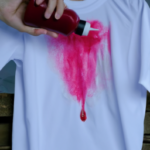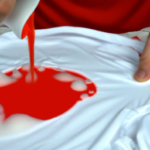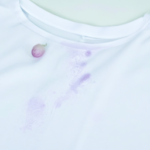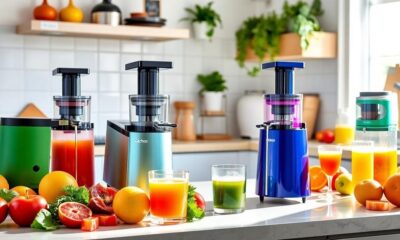Juice Tips and Tricks
How To Get Red Juice Stains Out Of Clothes

Have you ever experienced the frustration of spilling red juice on your outfit while enjoying a refreshing glass? I know I have, and removing those stubborn stains can be quite a challenge. But fear not, with a few simple steps, you can easily eliminate those pesky red juice marks and have your clothes looking as good as new.
First and foremost, it’s important to act fast. The longer you wait to treat the stain, the more difficult it will be to remove. So, as soon as you notice the stain, don’t hesitate to start the cleaning process.
In this article, I’ll walk you through the steps I take to remove red juice stains from my clothes, including pre-treating the stain, soaking the clothing, and washing it properly. I’ll also provide tips on how to prevent future stains from happening.
So, whether you’re dealing with a small spill or a full-blown stain, read on to learn how to get your clothes looking as good as new.
Key Takeaways
- Act fast and blot the stain with a clean cloth or paper towel
- Pre-treat the stain by removing excess juice and applying stain remover or dish soap and water mixture
- Soak the stained clothing in cold water for at least 30 minutes before washing
- Enzyme-based stain removers work best on organic stains like food, blood, and grass
Act Fast
If you want to save your clothes from permanent red juice stains, you gotta act fast and tackle the stain as soon as possible! A quick response is crucial when it comes to stain prevention.
The longer you wait, the harder it’ll be to remove the stain. This is especially true for red juice stains, which can quickly set and become almost impossible to remove.
The first thing you should do is blot the stain with a clean cloth or paper towel to remove any excess juice. Avoid rubbing the stain, as this can spread the juice and make the stain worse.
Once you’ve removed as much juice as possible, rinse the stain under cold water from the backside of the fabric. This’ll help to flush out any remaining juice and prevent the stain from setting.
Now, it’s time to move on to the next step and check the care label to make sure you’re using the right cleaning method.
Check the Care Label
Before attempting any stain removal, it’s important to check the care label on your garment to ensure you don’t accidentally ruin it.
Care labels provide valuable information about the fabric type, washing instructions, and drying recommendations. Understanding symbols on the care label will help you determine the best way to clean your garment. For example, a circle with a letter inside indicates the appropriate dry cleaning process, while a triangle with an ‘X’ indicates the garment should not be dry cleaned.
Different cleaning methods are recommended for different types of fabrics. For instance, silk and wool require gentle cleaning methods as they’re delicate fabrics that can easily be damaged. On the other hand, cotton and polyester can withstand more rigorous cleaning methods.
Once you have determined the appropriate cleaning method for your garment, you can proceed with stain removal.
To pre-treat the stain, you’ll need to follow a few simple steps. First, try to remove as much of the excess juice as possible without rubbing the stain further into the fabric. Then, apply a stain remover or a mixture of dish soap and water directly to the stain and let it sit for a few minutes before washing.
By following these steps, you can minimize the damage caused by the stain while ensuring your garment remains in good condition.
Pre-Treat the Stain
To effectively treat a stain, you’ll want to start by removing any excess residue and applying a stain remover or soap mixture directly to the affected area. There are different types of stain removers available in the market, such as enzyme-based, oxygen-based, and solvent-based. Enzyme-based stain removers work best on organic stains like food, blood, and grass. Oxygen-based stain removers are suitable for removing colored stains like juice and wine. Solvent-based stain removers are effective on grease, oil, and ink stains. It’s important to read the label and follow the instructions before using any stain remover.
If you prefer DIY stain removal methods, there are a few options to try. One is to mix equal parts of water and white vinegar and apply it to the stain using a clean cloth. Another is to make a paste of baking soda and water and apply it to the stain. Let it sit for 30 minutes before washing the clothing. It’s important to remember that some DIY methods may not work on all types of stains and fabrics. Always test on a small, inconspicuous area before treating the entire stain.
To make sure the stain is completely removed, it’s essential to soak the stained clothing in cold water for at least 30 minutes before washing it. This will help loosen the remaining stain and prevent it from setting in during the wash cycle.
Soak the Stained Clothing
Let’s give our stained clothes a refreshing soak in cold water for at least 30 minutes to ensure the best chance of removing the stain completely. There are numerous benefits of using cold water for soaking, such as preventing the stain from setting in and preserving the fabric’s color.
Here are some different soaking solutions for different types of stains:
-
For fruit juice stains: Soak the clothing in a mixture of cold water and white vinegar for 15-30 minutes before washing. After soaking, gently blot the stain with a clean cloth to lift any remaining residue. Launder the clothing as usual, but avoid using hot water, as it can set the stain. This method is particularly effective for removing strawberry juice stains, ensuring your garment stays fresh and stain-free. If the stain persists after washing, try treating it with a stain remover or a mixture of baking soda and water, gently scrubbing the area before laundering again. Understanding **how to remove strawberry juice** effectively can prevent permanent discoloration and keep your clothes looking like new. Always double-check the garment care label to ensure you’re using the safest method for the fabric type. Additionally, it’s important to act quickly with fruit juice stains to prevent them from setting into the fabric. For tougher stains, you may need to repeat the process a few times to fully lift the mark. While you’re tackling stains, you can also explore ways to **remove rust from hair naturally**, such as using a mixture of lemon juice and baking soda, which is effective in breaking down stubborn rust residues.
-
For tomato sauce stains: Soak the clothing in cold water mixed with liquid laundry detergent for at least 30 minutes before washing.
-
For red wine stains: Soak the clothing in cold water and salt mixture for several hours before washing.
-
For blood stains: Soak the clothing in cold water with a tablespoon of ammonia for 30 minutes before washing.
It’s important to note that different types of stains require different soaking solutions. By soaking the stained clothing before washing, you increase the chances of removing the stain completely without causing any damage to the fabric.
Now that we’ve given our clothes a good soak, it’s time to move onto the next step of washing the clothing.
Wash the Clothing
Now that our stained clothing has been given a refreshing soak, it’s time to dive into the washing process to ensure a complete removal of any remaining stains. The first step is to choose an effective detergent that is tough on stains but gentle on fabrics. Look for a detergent that contains enzymes, which are specifically designed to break down and remove protein-based stains like juice. You can also opt for a detergent with oxygen-based bleach, which can help lift and remove stubborn stains.
Next, it’s important to use the best washing techniques to ensure your stained clothing comes out looking like new. Begin by selecting the appropriate wash cycle and temperature for the fabric. Check the care label on your clothing for specific instructions. Use warm water for cotton and linen fabrics, and cold water for synthetic materials. Don’t forget to use the correct amount of detergent and avoid overloading the washing machine. Once the cycle is complete, inspect the clothing for any remaining stains before drying.
Now that we’ve washed our clothing, let’s check the stain to ensure it’s completely gone before we move on to the next step.
Check the Stain
When I’m checking a stain, I always make sure to repeat the steps if necessary. It can be frustrating to think you’ve removed a stain only to find it reappears after washing.
Additionally, it’s important to avoid drying the clothing until the stain is completely removed. Heat can set the stain, making it much more difficult to remove in the future.
Repeat Steps if Necessary
If the stain is still visible, you’ll want to repeat the previous steps until the red juice stain is completely gone. Sometimes, tough stains require more effort and patience to completely remove. Don’t give up just yet! Repeat steps two and three until you see the desired results.
To make the process easier, you can use the following table to keep track of the stain removal progress. This way, you can see if the stain is getting lighter or if it’s still visible. Remember that some fabrics are more delicate and may require a gentler approach, so adjust the steps accordingly. Once the stain is completely gone, you can move on to the next section about not drying the clothing until the stain is removed.
| Step | What to Do | Result |
|---|---|---|
| 1 | Blot the stain with a clean cloth | Red juice stain is still visible |
| 2 | Apply a stain remover solution | Stain lightens |
| 3 | Wash the garment with laundry detergent | Stain disappears |
| 4 | Repeat steps 2 and 3 if necessary | Stain continues to lighten until it’s completely gone |
Just because the stain is lightening doesn’t mean it’s completely gone. It’s important to keep repeating the steps until the stain is completely removed. This ensures that the garment looks clean and fresh, and you won’t have any surprises when you take it out of the dryer.
Do Not Dry the Clothing Until the Stain is Removed
Make sure you don’t ruin your favorite shirt by drying it before the stain is completely gone. The heat from the dryer can set the stain, making it extremely difficult to remove.
If you’re unable to remove the stain completely, try preventive measures such as wearing an apron or using a bib while eating or drinking red juice. Reducing discoloration can also be achieved by pre-treating the area with a stain remover or laundry detergent before washing.
It’s important to note that some stubborn stains may require multiple attempts before they’re completely removed. If the stain persists after the first wash, repeat the process until the stain is no longer visible.
If all else fails, try commercial stain removers to get rid of the stain completely.
Try Commercial Stain Removers
Using commercial stain removers can be a quick and effective solution for removing red juice stains from clothes. While natural stain removers have their benefits, they may not always be as effective as commercial ones, especially when it comes to tough stains like red juice.
When choosing a commercial stain remover, it’s important to compare the effectiveness of different brands and choose one that is specifically designed for removing fruit juice stains. One tip is to look for a stain remover that contains enzymes, which can break down the proteins in the juice and make it easier to remove.
Another option is to use a pre-treatment solution that can be applied directly to the stain before washing. However, it’s important to always read the instructions carefully and test the product on a small, inconspicuous area of the clothing before using it on the stain.
If the stain does not come out with commercial stain removers, it may be time to consider professional cleaning.
Consider Professional Cleaning
Sometimes, even our best efforts can’t remove stubborn marks, which is when it may be worth considering seeking professional cleaning services. Professional cleaning can be a great option for those tough stains that just won’t come out, especially for delicate fabrics or garments that are expensive or sentimental. Here are some reasons why professional cleaning may be the best option for you:
- Professional cleaners have access to specialized equipment and cleaning agents that aren’t available to consumers.
- They have years of experience and training in dealing with all kinds of stains and fabrics, which means they know how to treat your garments without damaging them.
- Professional cleaning can be more cost-effective in the long run, especially if you have multiple items that need to be cleaned.
Dry cleaning is a popular method used by professional cleaners, which is effective in removing tough stains and odors without the use of water.
If you’ve tried all the DIY methods and still can’t get rid of that pesky red juice stain, it may be time to consider professional cleaning. Not only will it save you time and frustration, but it can also extend the life of your clothes.
Now, let’s move on to the next section and learn how to prevent future stains.
Prevent Future Stains
Although professional cleaning can effectively remove red juice stains from clothes, it can also be costly and time-consuming. To avoid future expenses and hassle, it’s important to take preventive measures to keep your clothes stain-free. This means investing in stain-resistant fabrics and using color-safe detergents to maintain the quality of your clothes.
Stain-resistant fabrics are treated with a special coating that repels spills and stains. This makes it easier to clean up any spills before they have a chance to set into the fabric. It’s important to note that not all fabrics are stain-resistant, so be sure to check the label before making a purchase. Another way to prevent future stains is by using color-safe detergents. These detergents are formulated to protect the color of your clothes while still effectively removing stains. They also help prevent color bleeding and fading, which can make your clothes look dull and worn out over time.
| Preventive Measures | Explanation | Examples |
|---|---|---|
| Invest in Stain-Resistant Fabrics | Fabrics with a special coating that repels spills and stains | Polyester, Nylon, Acrylic |
| Use Color-Safe Detergents | Formulated to protect the color of your clothes while still effectively removing stains | Tide Plus Colorguard, Woolite Darks, Gain Flings! + Aroma Boost |
By incorporating these preventive measures, you can keep your clothes looking clean and vibrant without the need for professional cleaning. Stain-resistant fabrics and color-safe detergents can go a long way in maintaining the quality of your clothes and preventing future stains. So next time you’re shopping for clothes or doing laundry, remember to keep these tips in mind to keep your wardrobe looking its best.
Frequently Asked Questions
Can using hot water remove red juice stains from clothes?
Using hot water can help remove red juice stains from clothes, but it’s not always effective. I suggest trying alternative stain-removing methods, such as using vinegar, lemon juice, or a stain remover solution specifically designed for fruit juice stains.
Is it safe to use bleach on clothes with red juice stains?
Using bleach on clothes with red juice stains can be effective in removing the stain, but it can also cause damage to the fabric and discoloration. Alternative stain removal methods include using vinegar or lemon juice.
Can red juice stains be removed from delicate fabrics like silk or cashmere?
Removing red juice stains from delicate fabrics like silk or cashmere can be tricky. I recommend using natural stain removers like white vinegar or lemon juice mixed with baking soda. Be gentle and blot the stain, rather than rubbing it in.
Can vinegar be used as a natural stain remover for red juice stains?
I’ve found that vinegar is a great natural stain remover for many types of stains, including red juice. However, if you’re looking for vinegar alternatives, there are other natural remedies such as lemon juice and baking soda.
How long should the clothing be soaked in a solution before washing to remove red juice stains completely?
I’ve found that soaking time varies depending on the fabric and severity of the stain. Pre wash treatment ideas include using a stain remover or a mixture of detergent and white vinegar, followed by soaking for at least 30 minutes before washing.
Conclusion
So there you have it! These are the steps I follow to get red juice stains out of my clothes.
Remember, the key is to act fast and check the care label before doing anything else. Pre-treating the stain and soaking the clothing are also crucial steps in the process.
After washing the clothing, don’t forget to check the stain before throwing it in the dryer.
Did you know that according to a survey conducted by the American Cleaning Institute, 63% of people have experienced a laundry stain in the past year? That’s a lot of stained clothing!
But don’t worry, with the right techniques and a little bit of patience, you can easily remove those pesky stains and keep your clothes looking fresh and clean. Just remember to always check the care label and act fast!
Cindy thoroughly researches juicing trends, techniques, and recipes to provide readers with practical advice and inspiration. Her writing style is accessible, engaging, and designed to make complex concepts easy to understand. Cindy’s dedication to promoting the advantages of juicing shines through her work, empowering readers to make positive changes in their lives through the simple act of juicing.
Juice Tips and Tricks
How to Make Aloe Vera Juice Taste Better

Tired of the strong flavor of aloe vera juice? No problem, we’ve got the answer for you.
In this article, we’ll share some tips and tricks to make your aloe vera juice taste better. We have tried and tested various methods to enhance the flavor without compromising the health benefits.
From choosing the right juice to adding natural sweeteners and infusing with fruits and herbs, we’ve got all the information you need to transform your aloe vera juice into a delightful and refreshing beverage.
Let’s dive in!
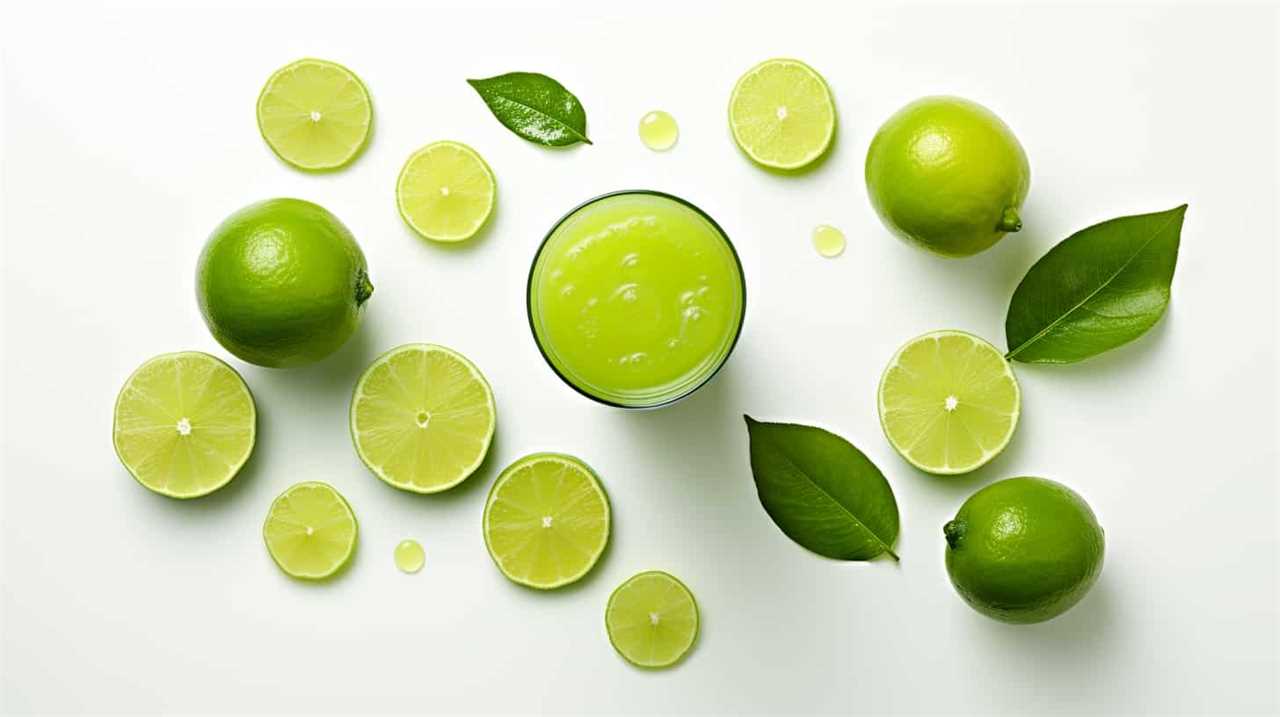
Key Takeaways
- Choose a reputable brand of aloe vera juice that prioritizes quality and uses organic, pure aloe vera.
- Avoid brands that contain added sugars or artificial ingredients.
- Use natural sweeteners like honey, agave syrup, or stevia to enhance the taste of aloe vera juice.
- Experiment with adding fruits, herbs, and other juices to create unique flavor combinations and enhance the health benefits of aloe vera juice.
Choosing the Right Aloe Vera Juice
We can enhance our experience with aloe vera juice by selecting the right brand and type for our preferences. When it comes to finding a reputable brand, it’s important to do some research and read reviews from other consumers. Look for brands that prioritize quality and use organic, pure aloe vera without any added sugars or artificial ingredients. Understanding the health benefits of aloe vera juice is also crucial in making the right choice. Aloe vera is known for its soothing properties, aiding digestion, promoting skin health, and boosting the immune system. By choosing a high-quality brand, we can ensure that we’re getting the maximum benefits from our aloe vera juice.
Now that we know how to choose the right brand, let’s move on to the next step of adding natural sweeteners.
Adding Natural Sweeteners
To enhance the flavor of our aloe vera juice, we can add natural sweeteners such as honey or agave syrup. Using alternative sweeteners not only adds sweetness but also brings unique flavors to the juice. Here are some options to consider:
- Stevia: A natural sweetener derived from the Stevia plant, it’s a zero-calorie alternative to sugar.
- Maple Syrup: This natural sweetener adds a rich and earthy flavor to the aloe vera juice.
- Dates: Pureed dates can be used to sweeten the juice while also providing essential nutrients like fiber.
In addition to using alternative sweeteners, we can enhance the flavor of aloe vera juice by adding spices and extracts. Cinnamon, ginger, or vanilla extract can add warmth and depth to the taste. By experimenting with different combinations of these natural sweeteners, spices, and extracts, we can create a flavor profile that suits our preferences.
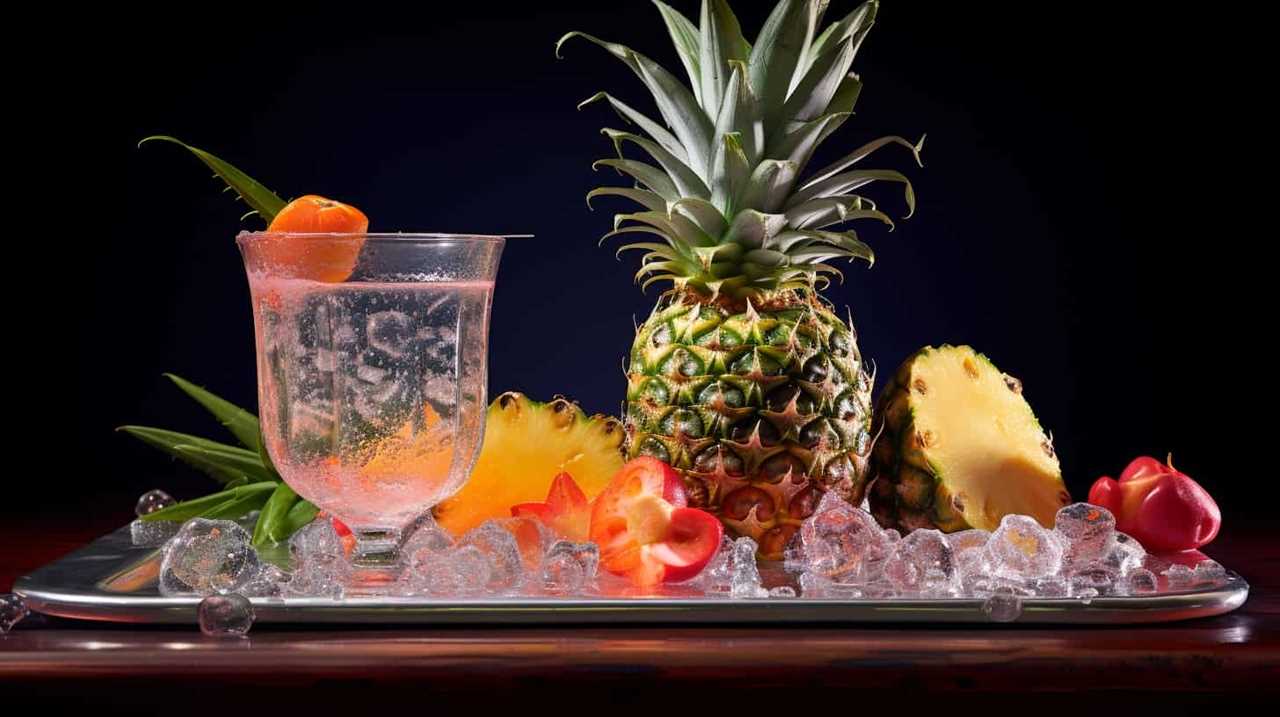
Now, let’s move on to the next section and learn how to infuse aloe vera juice with fruits and herbs to further enhance its taste.
Infusing With Fruits and Herbs
As we explore ways to make our aloe vera juice taste better, one option to consider is infusing it with fruits and herbs. Creating unique aloe vera blends by adding fruits and herbs not only enhances the flavor but also adds a touch of freshness and complexity to the juice. For example, combining aloe vera juice with lemon, mint, or berries can create a refreshing drink that’s both delicious and packed with additional nutrients. It’s similar to the ease of making lemonade with bottled juice—quick, convenient, and customizable to suit your preferences. By experimenting with different fruit and herb combinations, you can elevate your aloe vera juice experience while still reaping its health benefits.
Fruits like strawberries, pineapple, or citrus can add a burst of sweetness, while herbs like mint, basil, or ginger can provide a subtle yet refreshing twist. Exploring the benefits of herbal infusions can also be beneficial for our health. For example, adding a few sprigs of lavender can promote relaxation and reduce stress. Additionally, infusing aloe vera juice with rosemary can aid digestion and boost the immune system.
Blending With Other Juices
Let’s try mixing aloe vera juice with different fruit juices to create delicious and refreshing blends. Blending aloe vera juice with other fruits not only enhances its taste but also adds nutritional benefits to your drink. Here are three fruit juices that you can mix with aloe vera juice:

- Orange juice: Combining aloe vera juice with orange juice not only adds a tangy flavor but also boosts your intake of vitamin C, which is essential for a strong immune system.
- Pineapple juice: Mixing aloe vera juice with pineapple juice creates a tropical blend that isn’t only refreshing but also helps in digestion. Pineapple contains bromelain, an enzyme that aids in breaking down proteins and promoting better digestion.
- Watermelon juice: Blending aloe vera juice with watermelon juice creates a hydrating and refreshing combination. Watermelon is rich in water content and contains electrolytes that can help replenish your body’s fluids.
Experimenting With Flavor Combinations
While we can try various flavor combinations with aloe vera juice, it’s important to find the right balance to enhance its taste. Experimenting with different flavors can’t only make the juice more enjoyable but also enhance its health benefits.
Aloe vera juice is known for its numerous health benefits, such as boosting digestion, promoting hydration, and supporting the immune system. By adding complementary flavors, we can create a refreshing summer drink that not only tastes great but also provides a nutritional boost.
Some popular flavor combinations include mixing aloe vera juice with citrus fruits like lemon or orange, adding a splash of coconut water for a tropical twist, or combining it with cucumber and mint for a refreshing and cooling effect.
Don’t be afraid to get creative and find the flavor combination that suits your taste buds best!
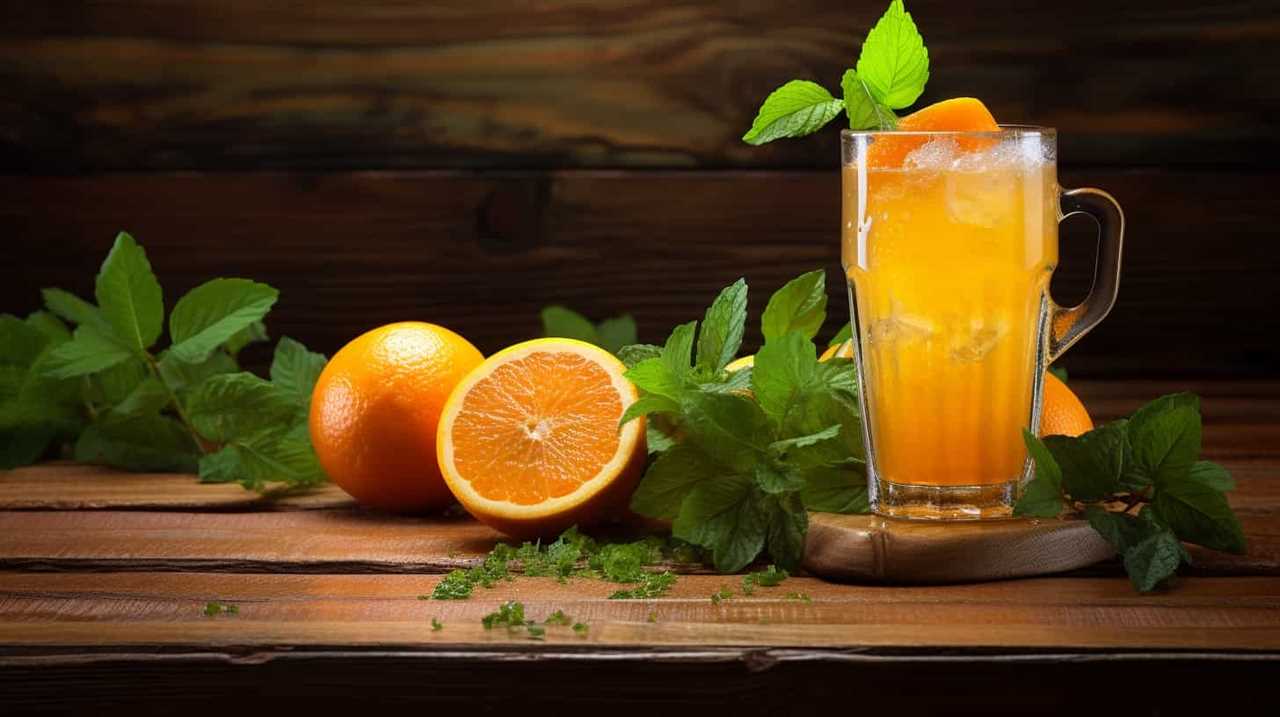
Frequently Asked Questions
Can I Use Store-Bought Aloe Vera Gel Instead of Fresh Aloe Vera for Making Juice?
Yes, you can use store-bought aloe vera gel instead of fresh aloe vera for making juice. However, it’s important to note that fresh aloe vera juice may have more health benefits due to its higher nutrient content.
How Long Can I Store Aloe Vera Juice in the Refrigerator?
Aloe vera juice can be stored in the refrigerator for up to a week. Refrigeration helps maintain the longevity and freshness of the juice, preserving its beneficial properties. It’s important to store the juice in an airtight container to prevent contamination and maintain its quality. Similarly, you might wonder *how long ginger juice lasts*; typically, fresh ginger juice can be refrigerated for about 1–2 weeks as well. Both aloe vera and ginger juices are best consumed within their shelf life to ensure maximum potency and health benefits. Additionally, freezing either juice can extend their shelf life, though some loss of nutrients and potency may occur during the process. When thinking about *how long fresh juice lasts*, it’s crucial to check for signs of spoilage, such as changes in smell, taste, or color, before consuming. To enjoy the best results, it’s always recommended to use fresh ingredients and properly store the juice to ensure you’re getting the most out of its health benefits.
Can Aloe Vera Juice Help With Digestive Issues?
Aloe vera juice can potentially help with digestive issues when taken in appropriate dosages. However, it is important to note that there may be potential side effects. It is always best to consult with a healthcare professional before starting any new supplement regimen.
Can I Use Artificial Sweeteners Instead of Natural Sweeteners in My Aloe Vera Juice?
Using artificial sweeteners in aloe vera juice may affect its taste and potential health benefits. However, natural sweeteners like honey or stevia can enhance the flavor without compromising its nutritional value.
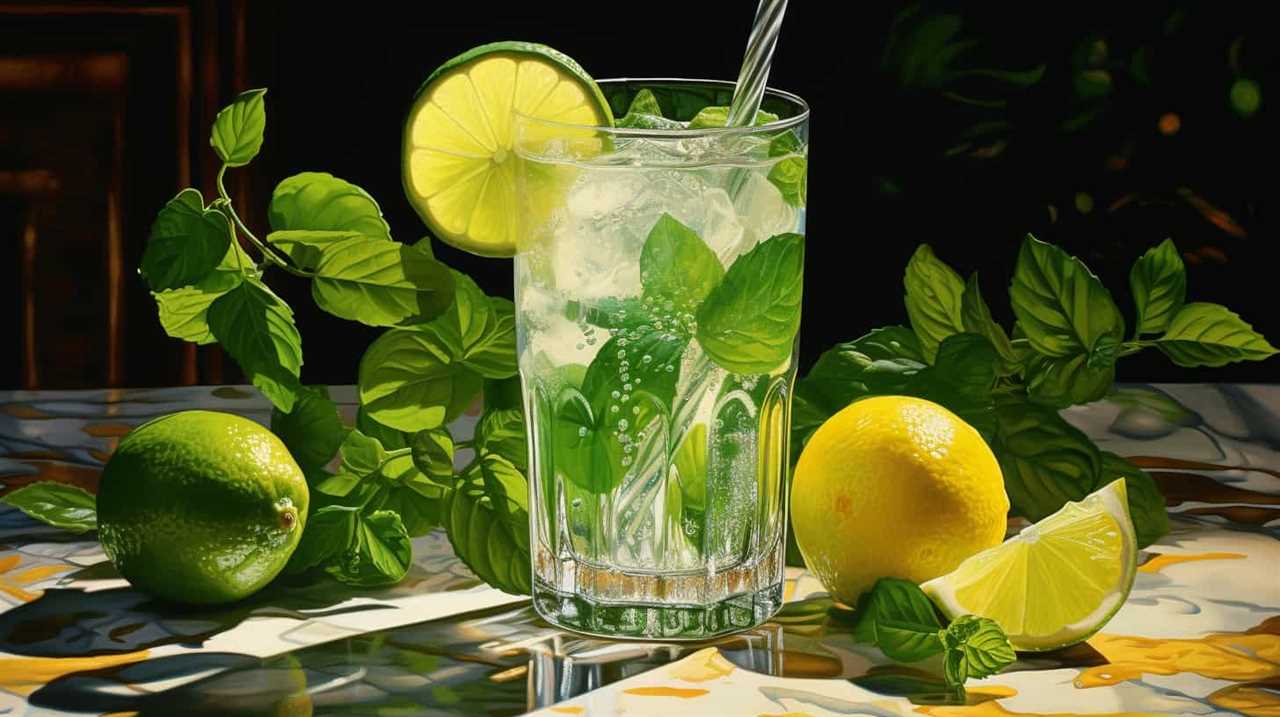
Is It Safe to Drink Aloe Vera Juice Every Day?
Drinking aloe vera juice daily can have numerous benefits, such as improving digestion and boosting the immune system. However, consuming it regularly may also lead to potential side effects like diarrhea or stomach cramps.
Conclusion
In conclusion, making aloe vera juice taste better is easy and enjoyable.
By choosing the right aloe vera juice and adding natural sweeteners, infusing with fruits and herbs, blending with other juices, and experimenting with flavor combinations, you can create a delightful and refreshing drink.
So go ahead and unleash your creativity in the kitchen, and transform your aloe vera juice into a sensational elixir that will transport your taste buds to paradise.
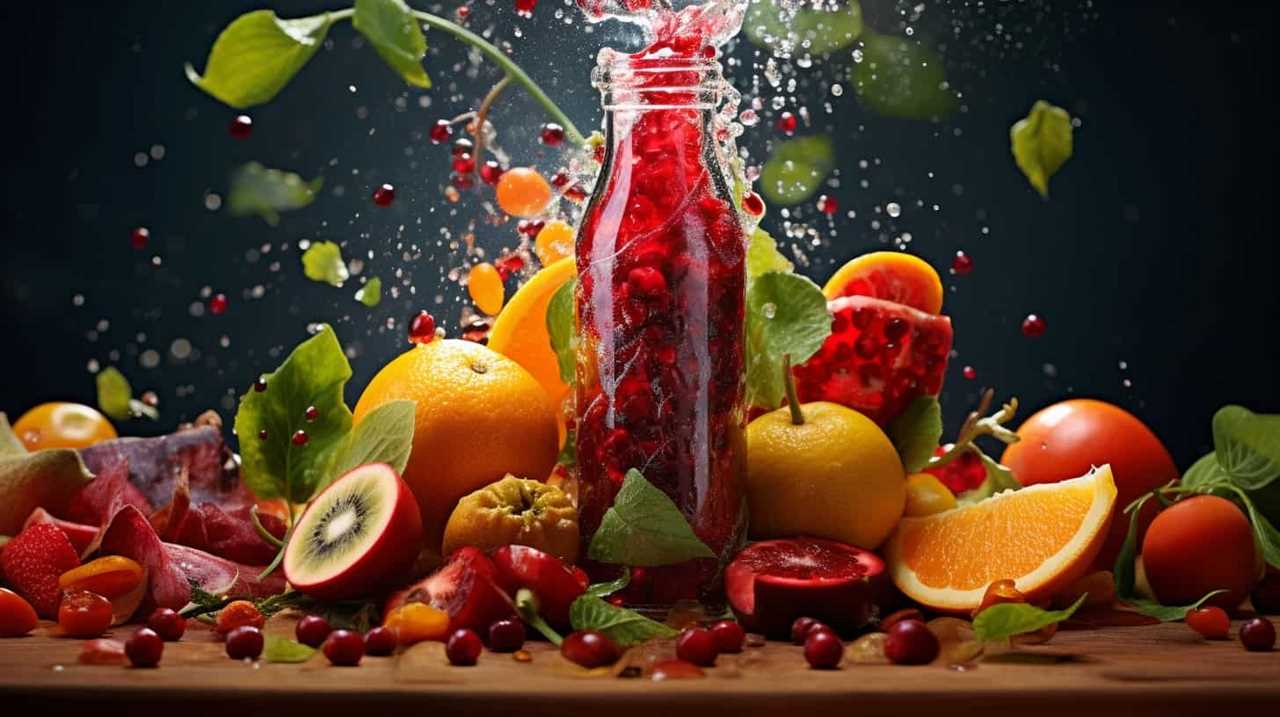
Susannah expertise lies in researching and compiling evidence-based content on juicing, nutrition, and overall health. She is committed to ensuring that The Juicery World offers accurate, up-to-date, and trustworthy information to empower readers to take control of their health. Susannah’s goal is to inspire individuals to embrace juicing as a way to nourish their bodies and live their best lives.
Juice Tips and Tricks
How to Make a Glass of Lemonade With Bottled Lemon Juice
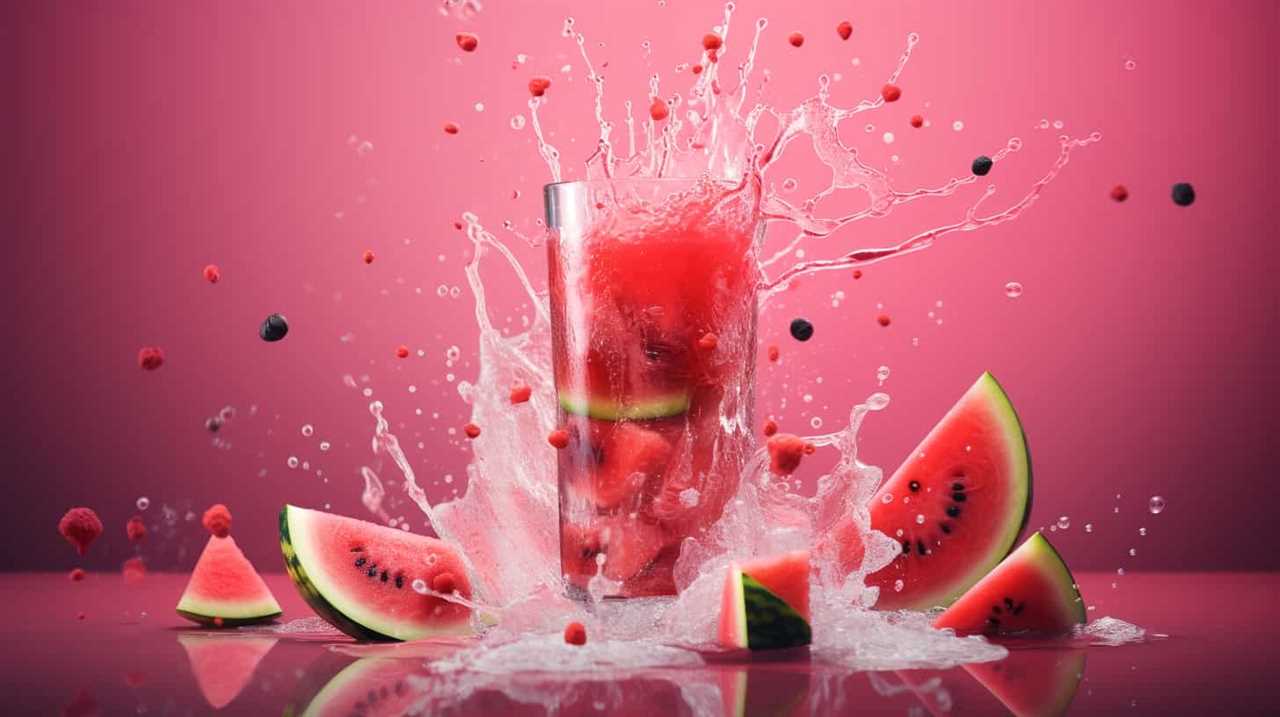
Are you craving a cool glass of lemonade to quench your thirst? Look no further! Try out our perfect recipe using bottled lemon juice that will surely please your taste buds.
In this article, we’ll guide you through the process of creating a tangy and sweet concoction that will leave you feeling refreshed and satisfied.
So grab your ingredients and let’s get started on this delightful journey of serving ourselves and others a glass of pure lemony goodness.
Key Takeaways
- Consider the storage of the bottled lemon juice (dark glass or plastic bottles, protect from light exposure, check expiration date)
- Choose a suitable pitcher and fresh lemons for enhanced flavor
- Store the lemonade concentrate in the refrigerator to maintain freshness
- Adjust the sweetness and tartness to taste with sugar or more lemon juice, and experiment with different sweeteners or additional flavors.
Choosing the Right Bottled Lemon Juice
What are the key factors we should consider when selecting the right bottled lemon juice for our lemonade?

One important factor is how the lemon juice is stored. Look for bottles that are made of dark glass or plastic, as they help protect the juice from light exposure, which can degrade its quality. It’s also important to check the expiration date to ensure freshness.
Another benefit of using bottled lemon juice is convenience. It saves time and effort compared to squeezing fresh lemons. Additionally, bottled lemon juice provides consistent flavor, as the acidity levels are standardized.
When selecting a brand, consider reading reviews and checking for certifications, such as organic or non-GMO.
Gathering the Necessary Ingredients and Tools
How can we gather all the necessary ingredients and tools to make a glass of lemonade with bottled lemon juice? First, we’ll need to collect bottled lemon juice, sugar, and cold water, as well as a pitcher and a spoon for mixing. If you prefer extra flavor, you can also gather ice and optional add-ins like mint or soda water. While preparing the lemonade, it’s easy to understand why some people wonder about other citrus drinks and may ask, “how many oranges per gallon” are needed when making orange juice instead. Once everything is assembled, combine the lemon juice, sugar, and water in the pitcher, stirring until the sugar dissolves. Feel free to adjust the sweetness or tartness to your liking, and don’t forget to add ice or any optional add-ins for an extra refreshing touch. This process might even make you curious about how much juice from oranges is needed when making fresh orange juice compared to using bottled citrus products. Once your lemonade is ready, pour it into a glass and enjoy the refreshing taste. This simple recipe can inspire you to try other homemade juices, such as learning **how to make pear juice** or experimenting with other fruit combinations. Whether you’re using fresh fruits or bottled options, creating your own beverages is a fun and rewarding way to personalize your drinks.
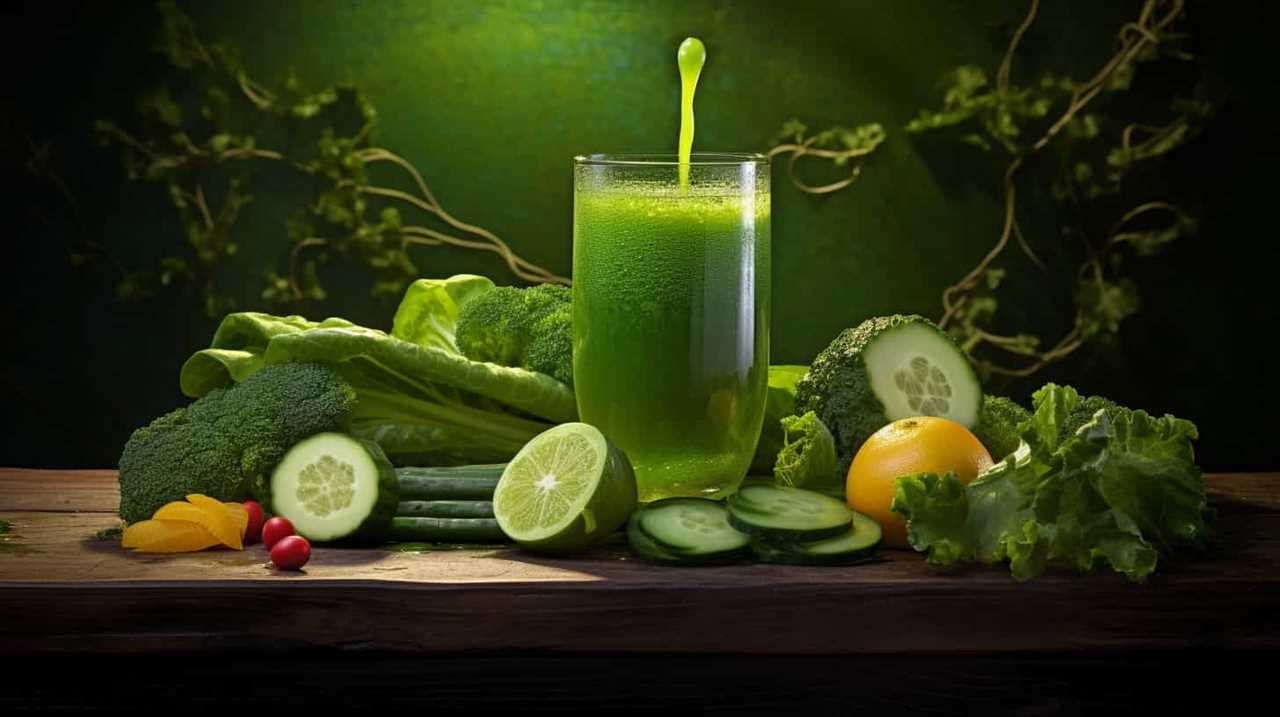
It’s important to start with the right pitcher. Look for a pitcher that’s made of glass or BPA-free plastic, as these materials won’t affect the taste of the lemonade. The pitcher should also have a lid or cover to keep the lemonade fresh and prevent spills.
Now, let’s talk about the lemons. While bottled lemon juice is convenient, using fresh lemons instead can elevate the flavor of your lemonade. Choose lemons that are firm and have a bright yellow color. Give them a gentle squeeze to ensure they’re juicy. To extract the juice, you’ll need a citrus juicer or a reamer. These tools make it easy to get every last drop of juice from the lemons.
Mixing the Lemonade Concentrate
To start mixing the lemonade concentrate, we’ll slowly pour the bottled lemon juice into the pitcher. It’s important to choose the right container for the lemonade concentrate. A pitcher with a lid or a tightly sealed container will help maintain the freshness and prevent any spills or leaks. Once the lemon juice is in the pitcher, we can move on to the next step of adding water and sweetener.
To ensure the lemonade concentrate stays fresh, it’s essential to store it properly. Keep the pitcher in the refrigerator to maintain its cool temperature and prevent any bacteria growth. If you have any leftover concentrate, transfer it to a smaller container with an airtight lid before refrigerating. This will help retain its flavor and prevent any contamination.
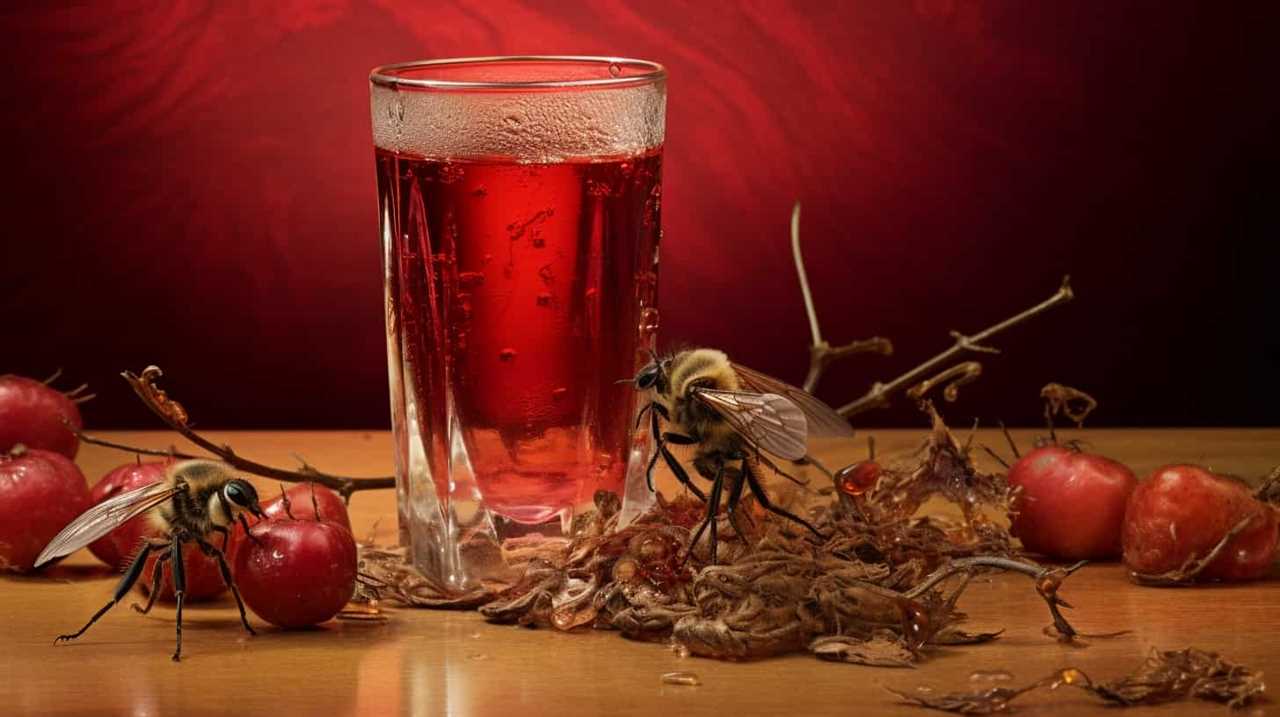
Now that we’ve mixed the lemonade concentrate, it’s time to adjust the sweetness and tartness to taste.
Adjusting the Sweetness and Tartness to Taste
We can adjust the sweetness and tartness of the lemonade to taste by adding more sugar or lemon juice, respectively. If you prefer a sweeter lemonade, simply add more sugar and stir until it dissolves completely. You can experiment with different sweeteners such as honey or agave syrup to find the perfect balance of sweetness.
On the other hand, if you want a tangier lemonade, add more lemon juice gradually, tasting as you go until it reaches your desired level of tartness.
Additionally, you can get creative with your lemonade by adding flavors like fresh mint leaves or a hint of lavender. These additions can elevate the flavor profile and create a more refreshing and unique experience.
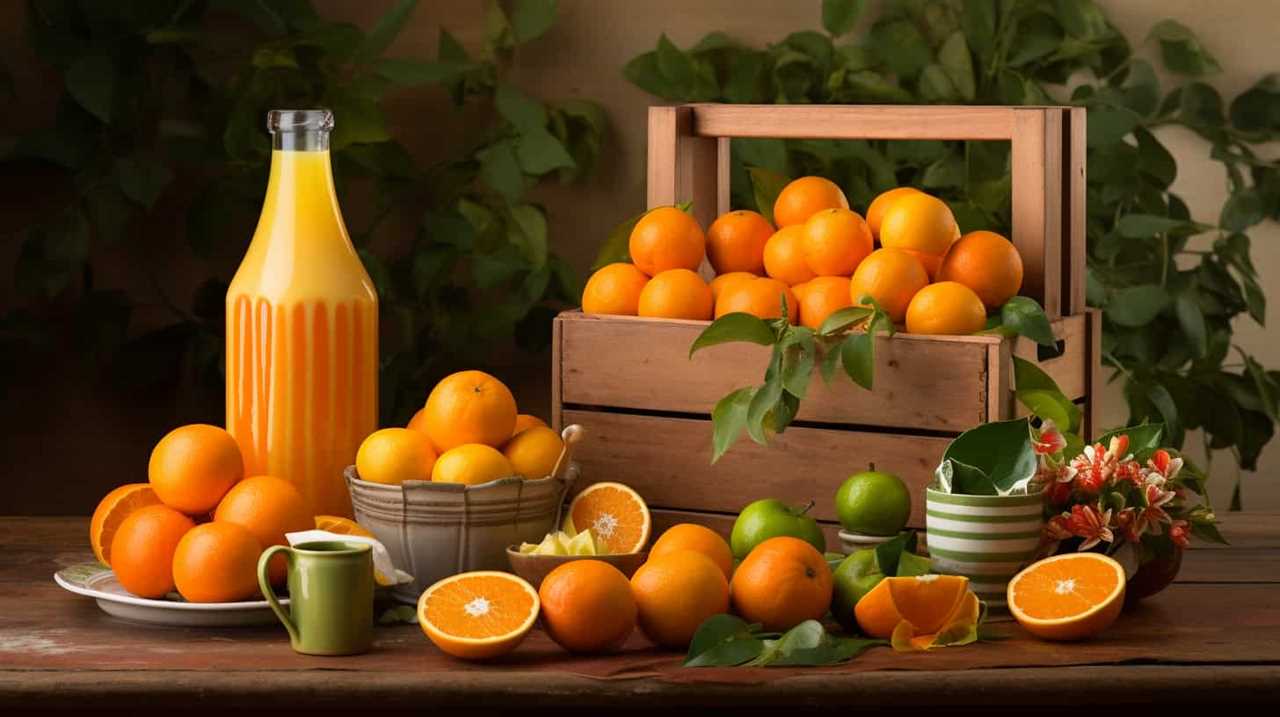
Now that we’ve adjusted the sweetness and tartness of our lemonade, let’s move on to serving and enjoying your refreshing glass of lemonade.
Serving and Enjoying Your Refreshing Glass of Lemonade
Now let’s sit back, relax, and savor our refreshing glass of lemonade.
When it comes to serving and enjoying this delightful drink, there are a few techniques and garnishing options to consider.
Firstly, serving your lemonade chilled is essential for maximum enjoyment. Ensure that you have chilled glasses or add ice cubes to the glasses before pouring the lemonade.

To add a touch of elegance, you can garnish your lemonade with a slice of lemon on the rim of the glass. For an extra burst of flavor, you could also add a sprig of fresh mint or a few berries.
Remember to gently stir the lemonade before serving to evenly distribute the flavors.
Now, take a sip, feel the refreshing tang of lemon, and let the sweet and tart flavors dance on your taste buds.
Cheers!

Frequently Asked Questions
Can I Use Fresh Lemons Instead of Bottled Lemon Juice?
Fresh lemons offer numerous benefits over bottled lemon juice. The taste of fresh lemons is unparalleled, providing a vibrant and tangy flavor. Incorporating fresh lemons into your lemonade will elevate its taste and give it a refreshing and authentic twist.
Can I Substitute Sugar With a Different Sweetener?
Substituting sweeteners in lemonade can enhance the flavor and offer health benefits. We’re knowledgeable about alternative sweeteners and can provide precise, detailed instructions on using them in place of sugar.
How Long Does the Lemonade Concentrate Need to Chill in the Refrigerator?
The chilling time for the lemonade concentrate in the refrigerator is typically around 1-2 hours. Using bottled lemon juice offers the benefit of convenience and consistent flavor for a refreshing glass of lemonade.
Can I Add Other Fruits or Flavors to the Lemonade?
Sure, we can definitely add different fruits or flavors to our lemonade. It’s a great way to experiment with unique flavors and create refreshing, personalized drinks. The possibilities are endless!

How Long Does the Lemonade Stay Fresh in the Refrigerator?
Lemonade made with bottled lemon juice can stay fresh in the refrigerator for about 5-7 days. To maximize shelf life, store it in an airtight container and keep it chilled.
Conclusion
And so, with a few simple steps and the right ingredients, a glass of refreshing lemonade is born.
Like a symphony of flavors dancing on your taste buds, this tangy elixir quenches thirst and brings joy on a hot summer day.
Just a sip transports you to a world of citrusy delight, where the sweetness and tartness blend harmoniously.

So go ahead, indulge in the art of lemonade-making and savor every drop of this sun-kissed nectar.
Cheers to the perfect glass of lemonade!
Susannah expertise lies in researching and compiling evidence-based content on juicing, nutrition, and overall health. She is committed to ensuring that The Juicery World offers accurate, up-to-date, and trustworthy information to empower readers to take control of their health. Susannah’s goal is to inspire individuals to embrace juicing as a way to nourish their bodies and live their best lives.
Juice Tips and Tricks
How to Know if Orange Juice Is Bad
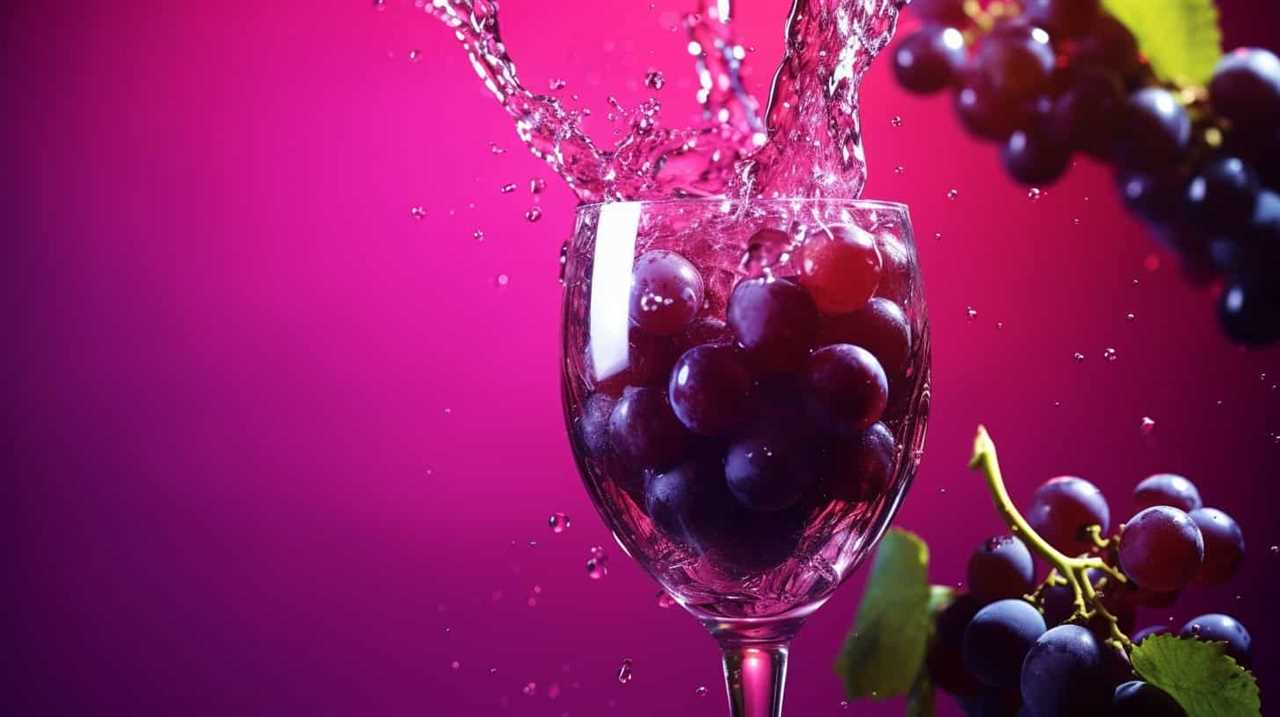
We’ve all been in that situation before – reaching for a glass of orange juice and hesitating, unsure if it’s still okay to drink. Fear not! This article will give you the knowledge you need to determine for sure if your orange juice is still fresh or if it’s gone bad.
With a blend of scientific precision and practical tips, we’ll explore color changes, strange smells, off taste, texture changes, and mold or growth that may indicate spoilage.
Let’s dive in and serve ourselves a refreshing glass of certainty!
Key Takeaways
- Color changes in orange juice can indicate a loss of freshness and shelf life extension, but it doesn’t necessarily mean the juice is bad.
- Unusual or off-putting odors in orange juice, such as sour or fermented scents, can be a sign of poor quality.
- An off taste in orange juice, such as sour, bitter, or fermented flavors, suggests that the juice is spoiled.
- Texture changes in orange juice, such as pulp separation or a thicker consistency, can occur as the juice ages, so it’s important to consume it before the expiration date.
Color Changes in Orange Juice
We should be aware that color changes can indicate whether orange juice is bad.
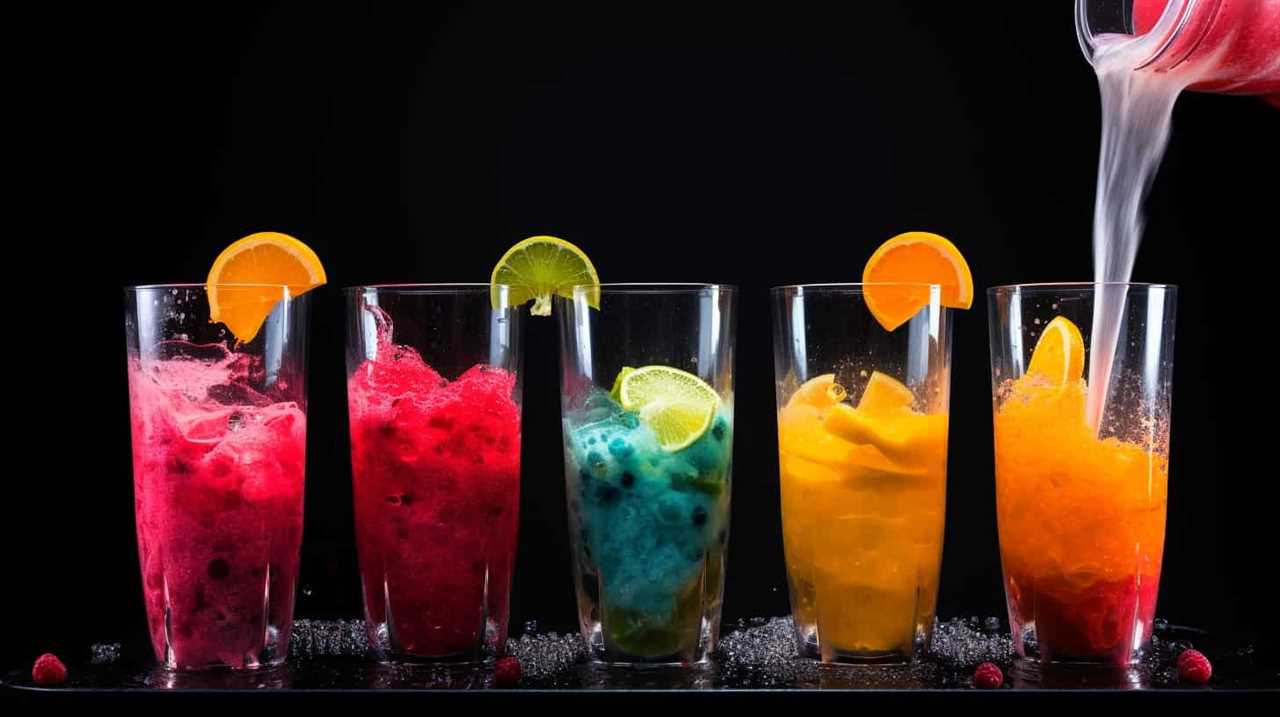
When it comes to orange juice, color is a crucial factor to consider. As oranges are exposed to air, an oxidation process occurs, which leads to changes in color. Fresh orange juice has a vibrant orange hue, indicating its freshness and high nutritional value.
However, as time passes, the juice may undergo a color change, turning dull or brownish. This change in color is a result of the oxidation process, which affects the flavor and quality of the juice. It’s important to note that while a change in color doesn’t necessarily mean the juice is bad, it does indicate that the juice is losing its freshness and shelf life extension.
Therefore, it’s advisable to consume orange juice when it’s at its freshest, as indicated by its vibrant orange color.
Strange Smells in Orange Juice
When it comes to evaluating orange juice, we should be cautious of any strange smells or odors. A fresh, pleasant smell is indicative of good quality orange juice. However, if you notice any unusual or off-putting odors, it may be a sign that the juice has gone bad. These smells can range from a sour or fermented scent to a rancid or moldy aroma.
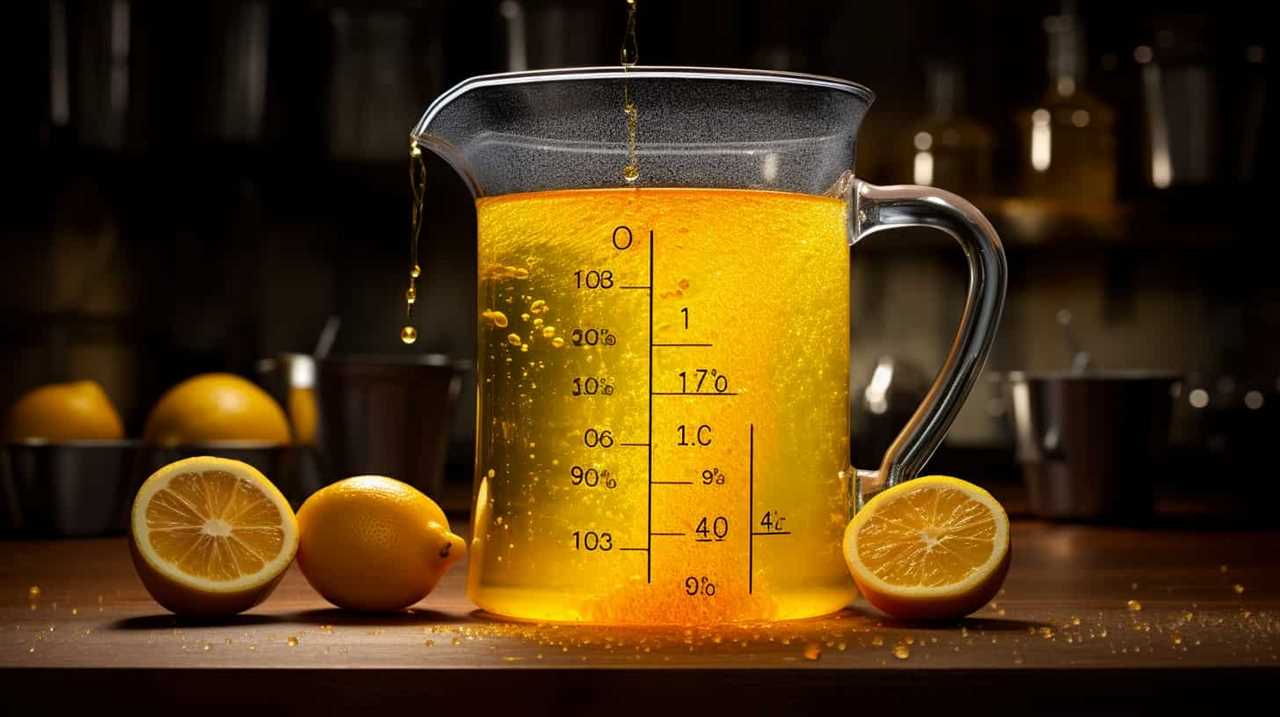
It’s important to note that while some natural variations in scent can occur due to the specific variety of oranges used, any strong or unpleasant smells should raise concerns. If you have citrus fruit allergies, it’s especially important to pay attention to the smell of orange juice, as it could indicate the presence of spoilage or contamination.
Ensuring the quality of orange juice is essential as it’s a popular beverage known for its health benefits, including being rich in vitamin C and antioxidants.
Off Taste of Orange Juice
Our taste buds can detect even the slightest hint of an off taste in orange juice, which can indicate that it has gone bad. The taste of orange juice should be fresh, tangy, and slightly sweet. If it tastes sour, bitter, or fermented, it’s likely spoiled.
One common cause of an off taste in orange juice is the use of overripe oranges. When oranges become overripe, their flavor profile changes, resulting in a less pleasant taste. Another factor to consider is the expiration date. Orange juice that has passed its expiration date is more likely to develop an off taste. It’s important to check the expiration date before consuming orange juice to ensure its freshness and quality. Additionally, improper storage conditions, such as leaving the juice at room temperature for extended periods, can lead to the development of unpleasant flavors. Storing orange juice in the refrigerator helps maintain its freshness for longer. For those exploring different juice options, aloe vera juice flavor tips suggest pairing tart juices with milder flavors to balance the overall taste.
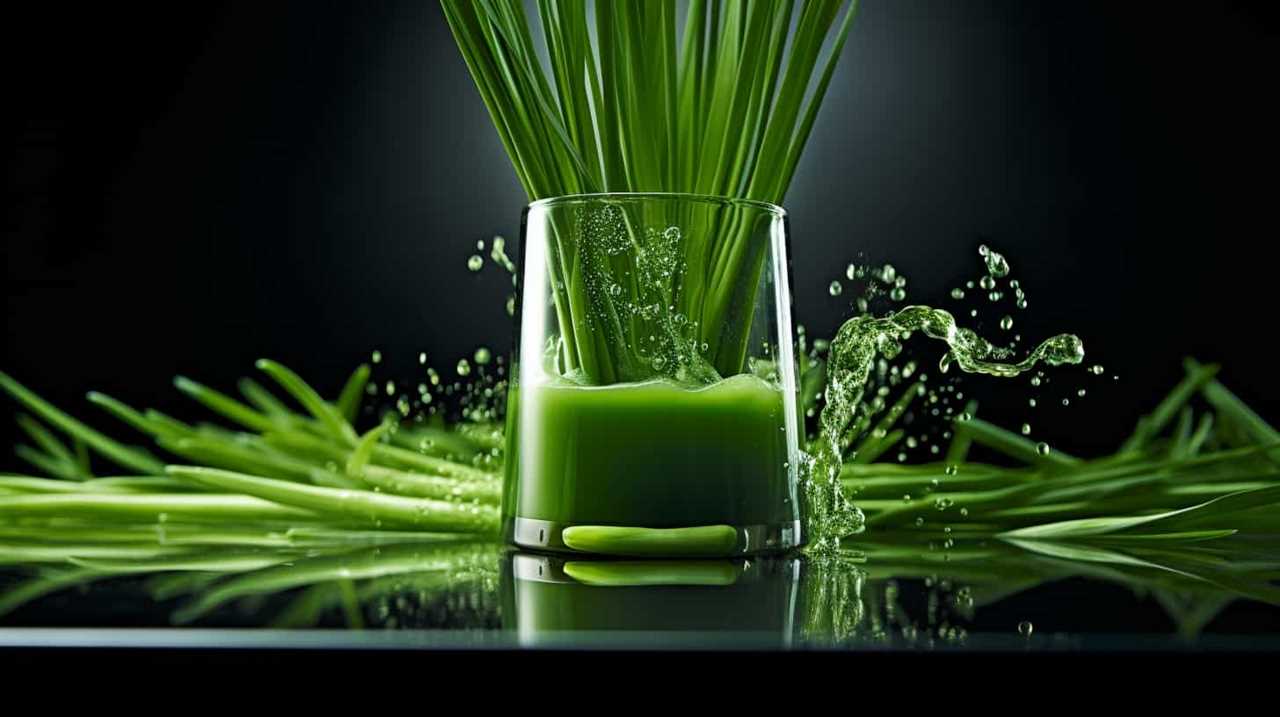
Now, let’s move on to discuss the texture changes in orange juice.
Texture Changes in Orange Juice
As we explore the texture changes in orange juice, it’s important to note that certain factors can cause it to become thicker or develop sediment. One common texture change in orange juice is pulp separation, where the pulp separates from the liquid and settles at the bottom. This can occur naturally over time, as the pulp particles become denser and sink.
Another factor that can affect the texture of orange juice is the expiration date. As orange juice ages, it may start to develop a thicker consistency and even form sediment. This is a result of the natural breakdown of the juice’s components. Therefore, it’s crucial to check the expiration date on orange juice and consume it before it reaches its expiration date to avoid any undesirable texture changes.
Mold or Growth in Orange Juice
We need to be aware of the possibility of mold or other growth occurring in orange juice. Mold can develop in orange juice if it isn’t stored properly or if it has passed its expiration date.

To prevent mold growth, it’s important to follow these steps:
- Store orange juice in the refrigerator at a temperature below 40°F (4°C).
- Check the expiration date on the bottle before consuming. Discard any orange juice that has expired.
- Keep the container tightly sealed to prevent air and moisture from entering, as these can promote mold growth.
Regularly inspecting orange juice for any signs of mold or unusual growth is essential. If you notice any discoloration, a strange odor, or visible mold, it’s best to discard the juice to avoid any potential health risks.
Frequently Asked Questions
Can Orange Juice Go Bad if It’s Stored in the Freezer for Too Long?
Frozen orange juice can potentially lose its nutrients and change its taste if stored in the freezer for too long. It is important to check for signs of spoilage before consuming it.
How Long Can Orange Juice Stay Fresh in the Refrigerator Once It’s Opened?
Once opened, orange juice can stay fresh in the refrigerator for about 7-10 days. To maintain its freshness, store it properly by keeping it tightly sealed and at a consistently cold temperature. If the orange juice develops an off odor, flavor, or appearance, it’s best to discard it to avoid any potential health risks. Factors like exposure to air and varying temperatures can influence how long orange juice lasts, so it’s crucial to handle it with care. Always check the expiration date as a general guide, but remember that proper storage can extend its freshness slightly. Additionally, avoid leaving the orange juice out at room temperature for extended periods, as this can significantly shorten how long orange juice lasts. Freezing the juice can be another option to extend its shelf life, but be aware that this may alter its texture and taste once thawed. By following these precautions, you can ensure your orange juice stays fresh and safe to consume.
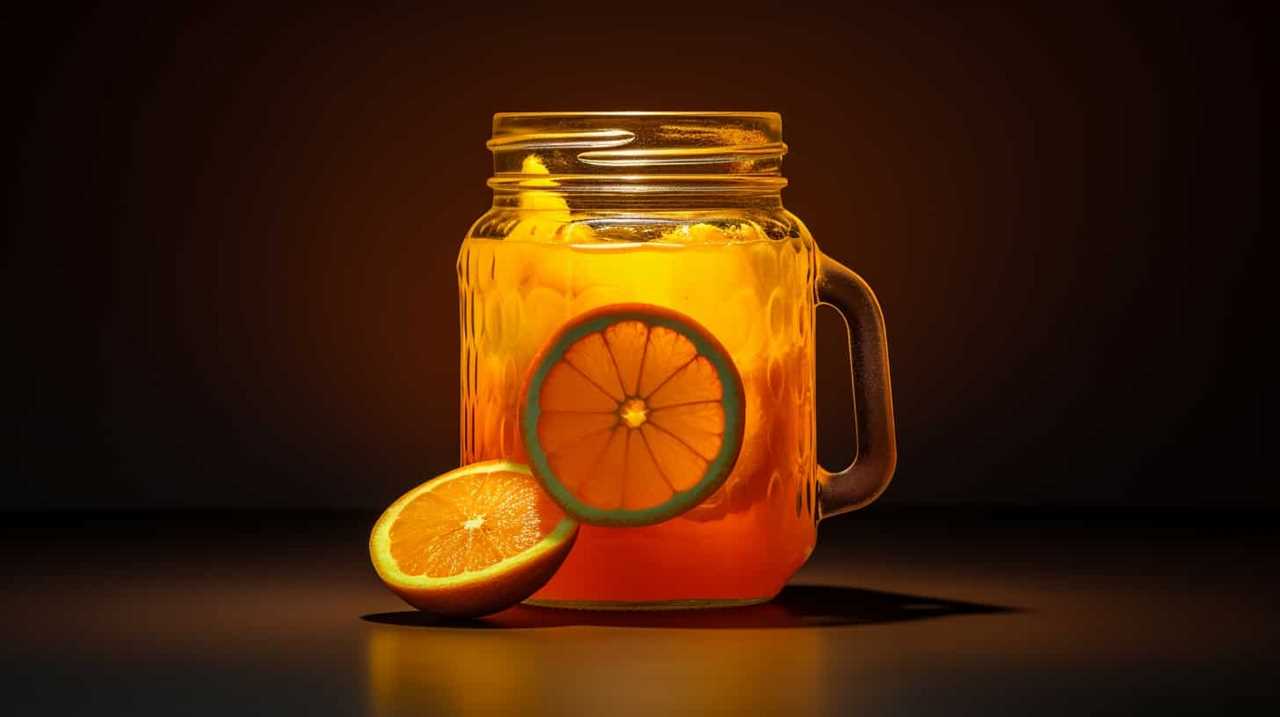
Is It Safe to Consume Orange Juice That Has Been Left Out at Room Temperature Overnight?
Left out orange juice may not be safe to drink as it can harbor harmful bacteria. Signs of spoiled orange juice include a sour smell, mold growth, and a change in color or taste.
Can Orange Juice Develop Harmful Bacteria if It’s Past Its Expiration Date but Still Looks and Smells Fine?
Orange juice can cause food poisoning if it develops harmful bacteria, even if it looks and smells fine. Signs of spoiled orange juice include a sour smell, mold growth, and a change in color or taste.
Does the Nutritional Value of Orange Juice Decrease as It Starts to Go Bad?
As orange juice goes bad, its nutritional value decreases. The longer it sits on the shelf, the more nutrients it loses. Signs of spoilage include a sour smell, off taste, and mold growth.
Conclusion
In conclusion, determining if orange juice is bad requires careful observation of color changes, strange smells, off taste, and texture changes. Just like a detective investigating a case, we must rely on our senses to detect any signs of spoilage.
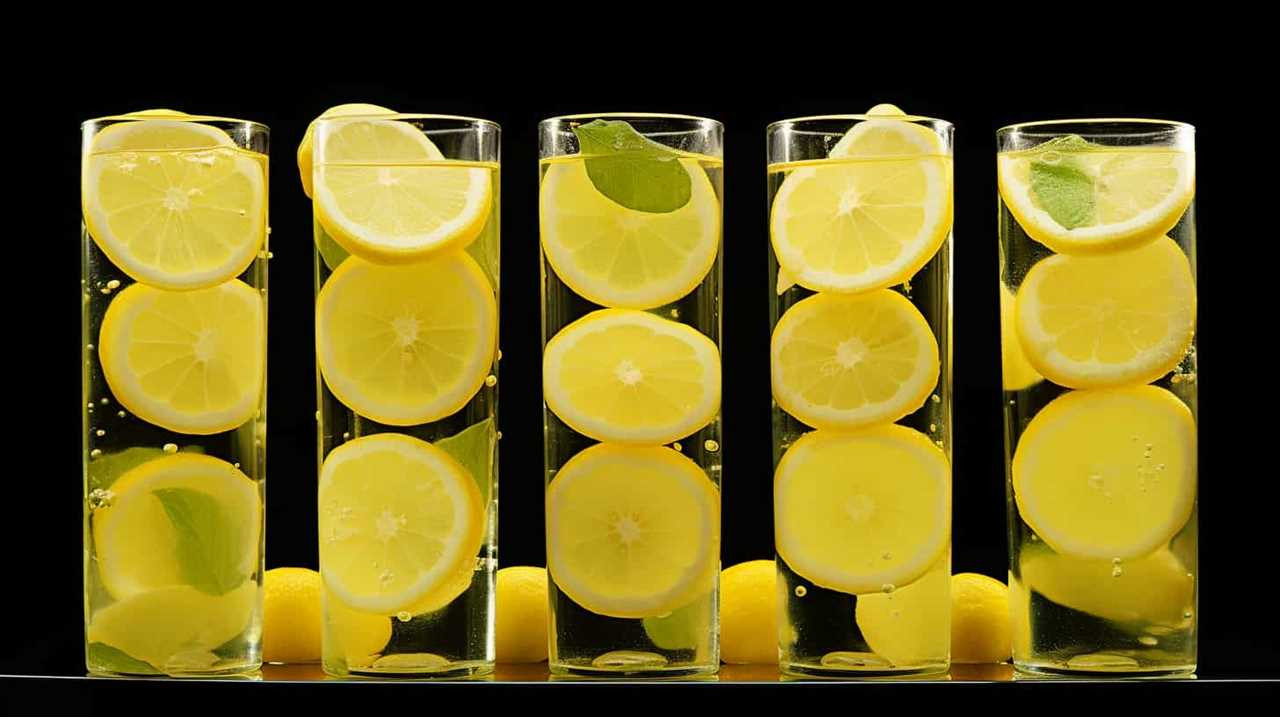
If we detect mold or growth in the orange juice, it’s a clear indication that it’s no longer safe to consume. By remaining vigilant and attuned to these indicators, we can ensure that our orange juice is always fresh and enjoyable.
Susannah expertise lies in researching and compiling evidence-based content on juicing, nutrition, and overall health. She is committed to ensuring that The Juicery World offers accurate, up-to-date, and trustworthy information to empower readers to take control of their health. Susannah’s goal is to inspire individuals to embrace juicing as a way to nourish their bodies and live their best lives.
-

 Vetted2 months ago
Vetted2 months ago15 Best Juices for Diabetics: Refreshing Options That Won’t Spike Your Blood Sugar
-

 Vetted2 months ago
Vetted2 months ago15 Best Decaf Coffee Options for Flavor Lovers Who Need a Caffeine Break
-

 Vetted2 months ago
Vetted2 months ago15 Best Espresso Ground Coffees to Elevate Your Morning Brew
-

 Vetted2 months ago
Vetted2 months ago15 Best K-Cup Coffee Pods for a Perfect Brew Every Time
-

 Vetted2 months ago
Vetted2 months ago15 Best Beans for Espresso: A Guide to Perfecting Your Brew
-

 Vetted2 months ago
Vetted2 months ago15 Best Inexpensive Espresso Machines That Brew Quality Coffee on a Budget
-

 Vetted2 months ago
Vetted2 months ago15 Best Kona Coffees to Savor the Rich Flavors of Hawaii
-

 Vetted2 months ago
Vetted2 months ago15 Best Cold Brew Coffees to Keep You Refreshed All Summer Long





